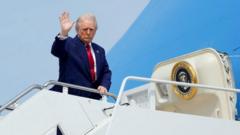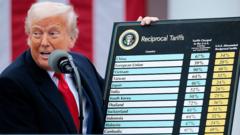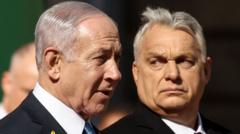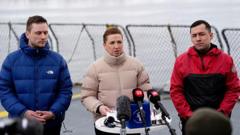As President Trump aims to repair ties with Russia, the fluctuating nature of these relations has left many in a state of confusion. Despite periods of optimism, recent developments reveal growing tensions and potential new sanctions that could impact international diplomacy.**
Navigating the Whirlwind: US-Russia Relations Under Trump**

Navigating the Whirlwind: US-Russia Relations Under Trump**
The turbulent dynamics of US-Russia relations continue to evolve under President Trump's leadership, bringing new challenges and uncertainties.**
If there was ever a lesson to encapsulate the ongoing complexities of US-Russia relations, it might well be titled "The Rollercoaster of Diplomacy." With President Donald Trump at the helm, these relations have experienced their fair share of highs and lows, akin to the thrilling twists of an amusement park ride.
As Trump returned to the White House in January, his initial approach was one of reconciliation, marked by high-profile discussions with Russian President Vladimir Putin and cooperative gestures like supporting a UN resolution that painted Russia in a less aggressive light. However, this trajectory took a sharp downturn recently as Trump's stance shifted abruptly following Putin's controversial comments regarding Ukraine.
After Putin suggested that Ukraine's governance should come under "external oversight," Trump expressed his frustration, stating he was “disappointed” by Putin's remarks about Ukrainian President Volodymyr Zelensky. Adding to the uncertainty, Finnish President Alexander Stubb suggested that American patience with Russia was waning fast.
In a striking twist, Trump threatened potential tariffs of up to 50% on Russian oil should Moscow appear uncooperative in peace negotiations surrounding Ukraine. Meanwhile, a bipartisan group in Congress proposed draconian tariffs on nations engaging in commerce with Russia, indicating a potential shift towards a more aggressive US stance.
Until recently, Russian media seemed to welcome the thaw in relations, with reports suggesting officials were finding common ground with their US counterparts. However, after Trump's escalated criticisms, that narrative changed sharply, with Russian outlets describing the administration as immature and reckless.
While the White House announced several sanctions, it notably granted a waiver to a key Russian official, raising eyebrows about the consistency of US policy. At a NATO meeting, Secretary of State Marco Rubio reiterated that diplomatic patience had been tested and warned the US would not engage in endless diplomatic maneuvers without tangible results.
In the face of ongoing dialogues, rumors swirled about a possible Trump-Putin phone conversation, yet clarity remained elusive as reports about its scheduling diverged sharply between Washington and Moscow.
The reality is that observing the US-Russian diplomatic narrative feels increasingly dizzying. Trump's initial reluctance to confront Putin directly has now seen a rising current of frustration and criticism from Washington. The questions remain: Will the administration take decisive action against Moscow? And is Russia prepared to embrace a resolution to the ongoing conflict? The international community watches and waits as the narrative unfolds, hoping for a clearer path toward resolution.






















